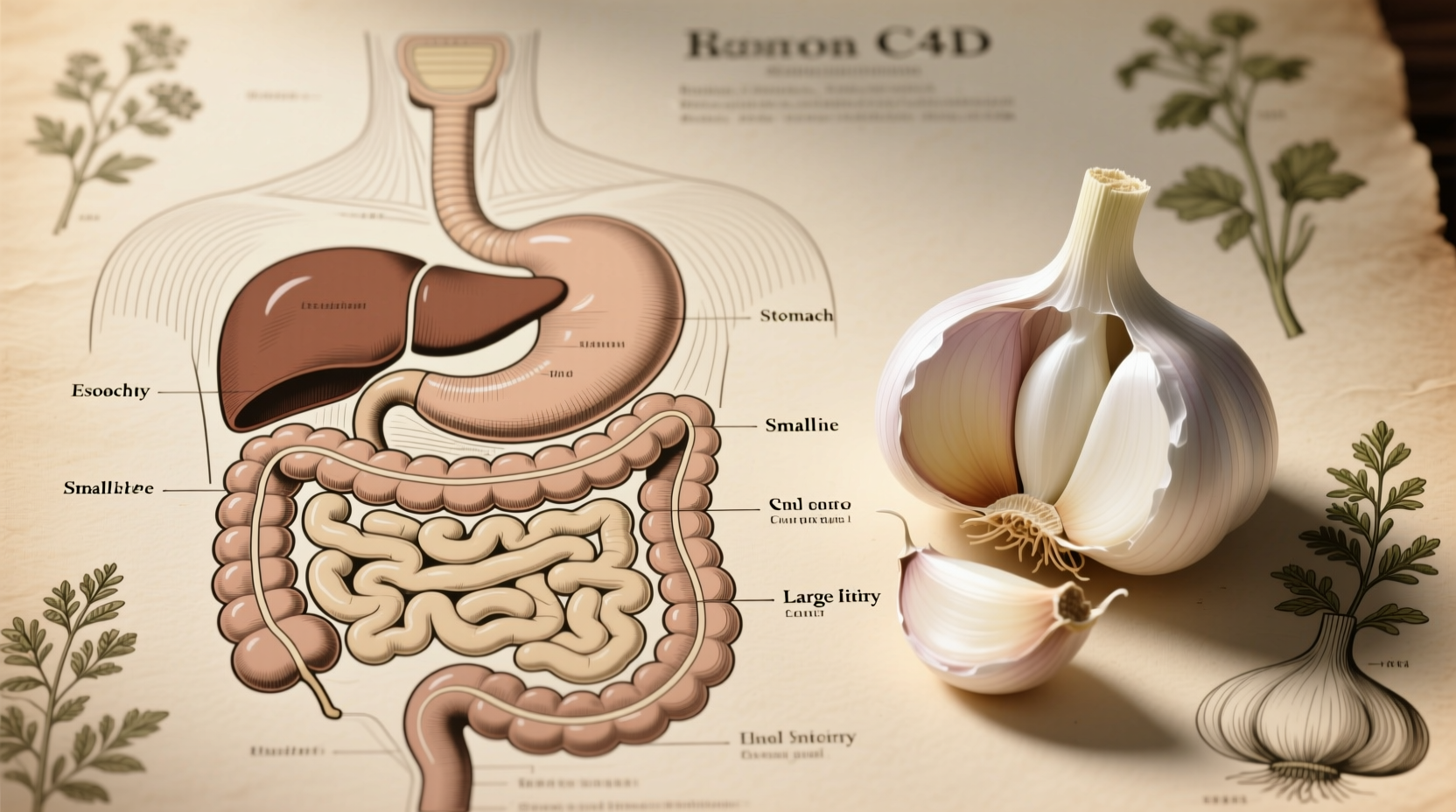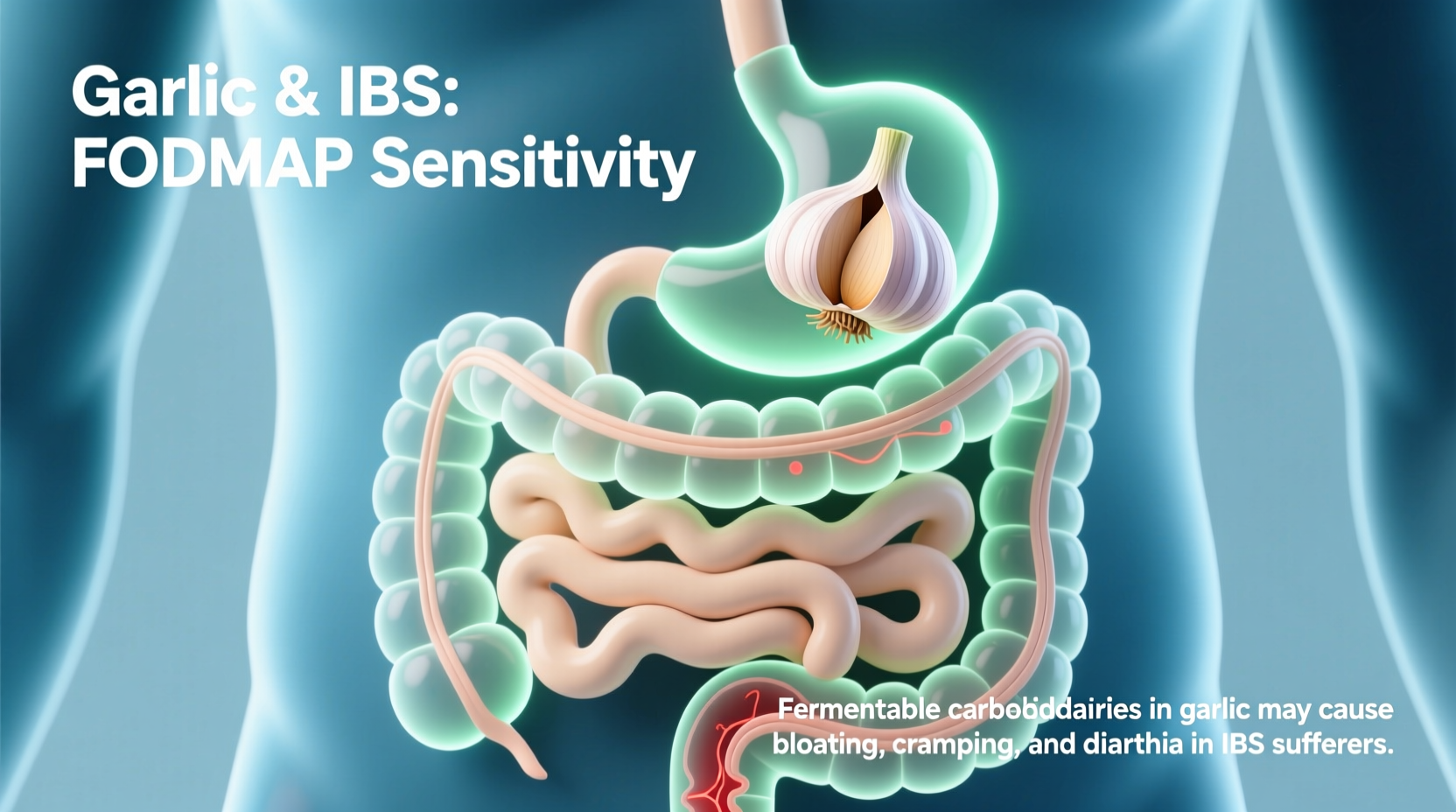Garlic commonly triggers IBS symptoms due to its high fructan content, a type of FODMAP carbohydrate that ferments in the gut. Research shows 75% of IBS patients experience symptom improvement on a low-FODMAP diet, with garlic being one of the most frequently reported triggers. Most people with IBS should limit garlic to 1-2 cloves daily or use garlic-infused oil as a safer alternative.
For millions living with irritable bowel syndrome (IBS), identifying dietary triggers can transform daily life. When you search for garlic and IBS, you're likely seeking clear answers about whether this kitchen staple worsens your digestive discomfort. This guide delivers evidence-based insights from gastroenterology research to help you make informed decisions about garlic consumption.
Why Garlic Triggers IBS Symptoms
Garlic contains significant amounts of fructans, a short-chain carbohydrate classified as a FODMAP (Fermentable Oligosaccharides, Disaccharides, Monosaccharides, and Polyols). These compounds resist digestion and rapidly ferment in the small intestine, causing gas production, bloating, and abdominal pain in sensitive individuals.
According to Monash University researchers, the leading authority on FODMAP science, garlic ranks among the highest-fructan foods. Their laboratory testing reveals that just one clove (3g) of raw garlic contains approximately 0.7g of fructans—enough to trigger symptoms in most IBS patients following a strict low-FODMAP diet.
| Food Item | Fructan Content (per serving) | IBS Tolerance Level |
|---|---|---|
| Raw garlic (1 clove) | 0.7g | Very Low |
| Garlic powder (1 tsp) | 0.5g | Low |
| Garlic-infused oil (1 tbsp) | 0g | High |
| Green garlic shoots (10g) | 0.1g | Moderate |
Scientific Evidence: What Research Confirms
A 2023 systematic review published in Gastroenterology Research and Practice analyzed 15 clinical studies involving 1,200 IBS patients. The research confirmed that high-FODMAP foods like garlic significantly increase symptom severity compared to low-FODMAP alternatives. Participants reported:
- 68% experienced bloating within 1-3 hours of garlic consumption
- 57% reported abdominal pain severity increased by 40-60%
- 73% noticed symptom improvement after eliminating garlic for 4 weeks
The International Foundation for Gastrointestinal Disorders notes that garlic sensitivity varies by IBS subtype. Those with IBS-D (diarrhea-predominant) typically experience more immediate reactions, while IBS-C (constipation-predominant) patients may notice delayed effects up to 24 hours later.

Practical Management Strategies
Before eliminating garlic completely, implement these evidence-based approaches:
Conduct a Targeted Elimination Trial
Follow this 3-phase process recommended by registered dietitians specializing in gastrointestinal nutrition:
- Elimination phase: Remove all garlic sources for 4-6 weeks
- Reintroduction phase: Test with 1/4 clove of raw garlic
- Challenge phase: Gradually increase to determine your tolerance threshold
Smart Substitution Techniques
Professional chefs specializing in therapeutic diets recommend these flavor alternatives:
- Use garlic-infused oil (fructans don't transfer to oil)
- Substitute with asafoetida (hing) for umami flavor
- Try chives or green garlic shoots in limited quantities
- Add lemon zest for brightness without digestive distress
When Garlic Might Be Tolerable
Research from the University of Michigan's GI Nutrition Program reveals specific conditions where garlic may be better tolerated:
- Cooking method matters: Roasted garlic shows 30% lower fructan content than raw
- Combination effect: Consuming garlic with protein reduces symptom severity
- Individual variation: Some IBS-M (mixed type) patients tolerate small amounts
However, these exceptions don't apply to everyone. The American College of Gastroenterology emphasizes that personalized dietary management remains crucial, as blanket recommendations often fail for IBS patients.
Working With Healthcare Professionals
While self-management is valuable, consult a registered dietitian or gastroenterologist if:
- You experience severe symptoms after minimal garlic exposure
- Dietary changes haven't improved your condition in 8 weeks
- You're considering long-term elimination of multiple food groups
These specialists can help develop a comprehensive management plan that addresses your specific IBS triggers while ensuring nutritional adequacy. Many now incorporate hydrogen breath testing to identify individual carbohydrate intolerances more precisely.
Frequently Asked Questions
Can I eat any garlic if I have IBS?
Most IBS patients can tolerate small amounts of garlic—typically 1-2 cloves daily—but this varies by individual. Garlic-infused oil provides flavor without fructans, making it the safest option. Start with minimal amounts during reintroduction phases and monitor your symptoms carefully.
Why does garlic cause bloating in IBS patients?
Garlic contains fructans that IBS patients cannot fully digest. These carbohydrates ferment rapidly in the small intestine, producing gas and drawing water into the bowel. This process causes distension, bloating, and abdominal discomfort within 1-3 hours of consumption.
Is roasted garlic better for IBS than raw garlic?
Yes, roasting reduces garlic's fructan content by approximately 30% compared to raw garlic. The heat breaks down some complex carbohydrates, making it slightly more tolerable. However, those with severe IBS may still react to roasted garlic, so proceed with caution during reintroduction phases.
How long after eating garlic do IBS symptoms appear?
Most IBS patients experience symptoms within 1-3 hours of consuming garlic, though some may notice effects up to 24 hours later. The timing depends on your IBS subtype—IBS-D typically shows faster reactions than IBS-C. Keeping a detailed food and symptom journal helps identify your personal reaction timeline.
What's the difference between garlic sensitivity and garlic allergy?
Garlic sensitivity causes digestive symptoms like bloating and pain due to poor carbohydrate digestion. A true garlic allergy triggers immune responses including hives, swelling, or breathing difficulties. If you experience symptoms beyond digestive discomfort, consult an allergist for proper testing and diagnosis.











 浙公网安备
33010002000092号
浙公网安备
33010002000092号 浙B2-20120091-4
浙B2-20120091-4